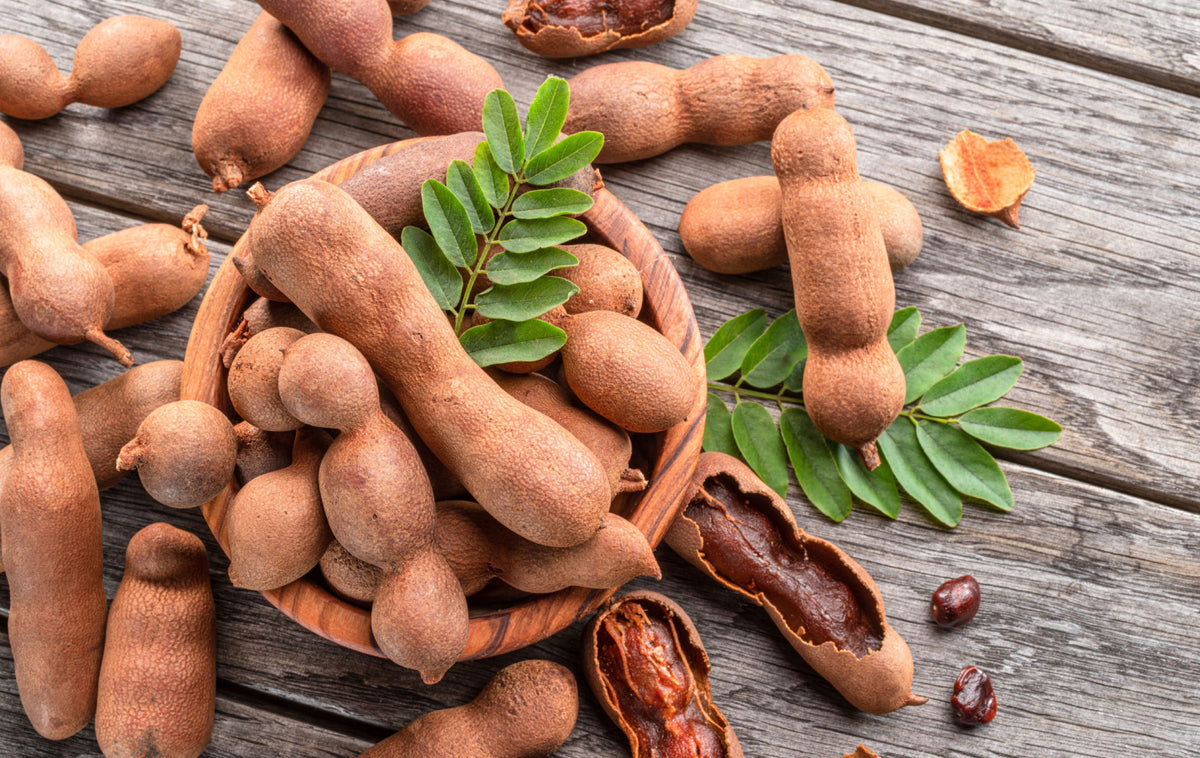Many are unaware of the health benefits of Tamarind or Imli (In India). The reddish brown, curved seed pods hold several large seeds encased by moist, sticky, dark brown flesh that varies from being very sweet to very sour. The trees is quite huge with a height of 12.1 to 18.3 meters. Once a year, the trees bear curved pods in good number of each and every branch. These pods have brown colored pulp covering two to ten hard brown seeds in it. People have cooked it for various curries. You can eat raw Tamarind pulp or use it for making jams, sauces, juices.
Rich in vitamins and minerals. Tamarind is high in vitamins such as vitamin A, B, C, and it’s also a good source of minerals such as iron, copper, potassium, magnesium, calcium, zinc, and selenium.
Health Benefits Of Tamarind Given Below:
- The Tamarind fruit has been found to be rich in antioxidants and has emerged as an effective natural defense against cancer. Though these benefits are yet to be proven, we are aware that antioxidants in the body help to fight free radicals, that can lead to the development of cancer in the body. It can thus be concluded that the using of the tamarind fruit can provide an active defense against different types of cancer.
- Eye drops made from tamarind seeds may be a treatment for dry eye syndrome. Tamarind seed polysaccharide is adhesive, enabling it to stick to the surface of the eye longer than other eye preparations. People use tamarind seed polysaccharide as an ingredient in food material and pharmaceutical products. Drs. Maurizio Rolando and Cristiana Valente from the University of Genoa, Italy had 30 dry-eye sufferers use Tamarind seed polysaccharide or hyaluronic acid drops three or more times per day for 90 days. The Tamarind seed polysaccharide eye drops performed as well as the hyaluronic acid drops on several measures of dry eye syndrome. Furthermore, the Tamarind seed polysaccharide drops did a significantly better job of relieving several key subjective symptoms of dry eye syndrome – namely, trouble blinking, ocular burning, and the feeling of having something in one’s eye.
- The leaves and seeds are astringent. Tender leaves and flowers have a cooling effect. The bark is astringent and serves as a tonic.
- Tamarind pulp is rich in thiamine. Your nerves, muscles, and digestive system need this vitamin for proper functioning. Tamarind pulp is a source of potassium, which is necessary for heart health and smooth muscle function. Tamarind is also a rich plant source of iron. This necessary mineral helps your blood carry oxygen to all the cells of the body.
- Protein is not a common nutrient among fruits or vegetables. But among fruits, tamarind contain the highest in protein, a nutrient which produces antibodies to help combat viruses and bacteria.
- In summer elixir type syrup is prepared from it, which is very cooling and anti-bilious. Sometimes, doctors give it to patients suffering from fever, sunstroke, and inflammatory conditions.
- The pulp of the fruit is useful in constipation. According to the Unani system, the pulp is effective in controlling fever. Also, it purges the bile.
- Add a natural supply of magnesium to your diet by snacking on tamarinds. Study participants have shown that individuals with high potassium and magnesium intake had higher bone density and stronger bones than those who didn’t.
- Studies done on animals has shown that Tamarind fruit works well to stabilize and lower cholesterol levels in the body, thereby protecting it from a host of heart diseases. It has also proven useful in stabilizing blood sugar levels. However, there is no scientific proof of this effect on human beings.
- With its rich iron content, consuming Tamarind helps combat iron-deficiency anemia.
